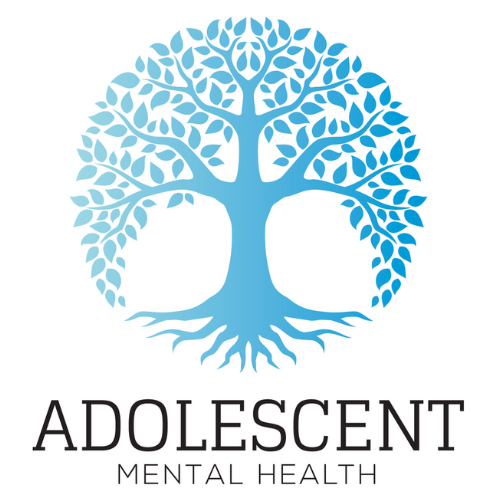Parent-Teen Conflict De-Escalation in 10 Minutes: Quick Strategies for Parents to Resolve Teen Arguments
Parent-teen conflict de-escalation in 10 minutes is a focused, time-bound approach that helps parents interrupt escalating arguments, lower emotional arousal, and preserve the relationship quickly. By using brief regulation techniques, clear scripts, and validation, parents can reduce defensiveness and create space for problem-solving without letting a disagreement become a lasting rupture. This article teaches how to recognize common triggers and escalation signs, follow a five-step 10-minute toolkit with practical scripts, and build longer-term communication practices that prevent repeat conflicts.
You’ll also learn how specific mental health conditions change conflict dynamics and when to consider family therapy or a formal program to get structured support. The sections that follow cover causes and escalation, an actionable 10-minute de-escalation HowTo, relationship-building strategies and red flags for professional help, and how teen mental health shapes arguments and responds to family therapy and Virtual IOP interventions.
What Causes Parent-Teen Conflicts and How Do They Escalate?
Parent-teen conflicts typically stem from developmental drives, mismatched expectations, and environmental stressors that collide with a teen’s push for autonomy. The mechanism of escalation is usually: trigger → reactive emotion → reciprocation → escalation, and interrupting that loop early restores calm and opportunity for repair. Understanding these drivers helps parents set realistic expectations and spot the first signs of a spiraling interaction. The next subsection explains adolescent brain and behavior drivers so parents can interpret pushback as developmentally normal rather than personal provocation.
Why Do Teens Argue? Understanding Adolescent Behavior and Brain Development
Adolescents argue more because their brains prioritize reward sensitivity and social identity while the prefrontal cortex that supports impulse control is still maturing. This neurological pattern produces stronger emotional responses and a higher tendency to test boundaries as teens form independence and identity. Recognizing that irritability, testing limits, and dramatic reactions often have a developmental basis reduces parental reactivity and supports a calmer, coaching stance. Applying that perspective makes practical de-escalation techniques—like pausing and validating—more effective when a teen is emotionally charged.
What Are the Signs of Escalating Conflict Between Parents and Teens?
Escalation shows up as changed tone, increased volume, sarcasm, personal attacks, shutting down, physical pacing, or door-slamming, and these cues signal a narrowing window for calm repair. Early interventions—lowering your tone, naming the emotion, and suggesting a pause—can stop escalation and preserve the relationship for later problem-solving. Below is a short checklist of typical escalation signs and safe first responses to interrupt the cycle quickly.
- Raised voice, yelling, or rapid-fire talking: step back, lower your voice, and slow your pace.
- Personal criticism or name-calling: refuse to reciprocate and shift focus to the feeling under the words.
- Withdrawal, silence, or door-slamming: offer a brief pause and a plan to reconnect in 10–30 minutes.
These observable signs and immediate responses give parents practical options to defuse tension and set up a calmer reconnection.
How Can Parents De-Escalate Teen Conflicts Quickly in 10 Minutes?
Quick de-escalation in 10 minutes uses a compact five-step framework that lowers intensity, restores connection, and creates a short plan for reconnection—delivering immediate relational repair and safety. The following H3 details the five steps with one-line scripts parents can use; after that, a short EAV table summarizes each step, what to say, and why it works so parents can scan and use it during a real argument.
What Are the 5 Quick Steps to Calm Parent-Teen Arguments?

These five steps are designed to fit into a ten-minute window and rely on regulation, connection, and simple planning.
- Pause & Breathe: Take three slow breaths and say, “I need a minute to think so we don’t hurt each other.”
- Ask a Calm Question: Ask, “Can you tell me what’s most upsetting right now?” to invite information.
- Reflect & Validate: Summarize briefly: “You’re angry because you felt ignored—that makes sense.”
- State a Calm Boundary: Say, “I won’t accept yelling; we can pause and come back.”
- Offer a Time-Out & Reconnect Plan: Propose, “Let’s take twenty minutes and then talk for ten to find a solution.”
These steps reduce physiological arousal, lower defensiveness, and create a clear path to reconnection that respects both safety and autonomy.
Introductory context for the quick-steps table: the table below provides concise scripts you can read or adapt during a rising argument; each line explains why the phrase reduces reactivity and restores communication.
| Step | What to Say (Example Script) | Why it Works |
|---|---|---|
| Pause & Breathe | “I’m going to take a minute so I can hear you.” | Reduces physiological arousal and prevents reactive escalation. |
| Ask a Calm Question | “What do you want me to understand right now?” | Shifts focus from blame to information, lowering defensiveness. |
| Reflect & Validate | “You sound frustrated about the rule; that makes sense.” | Validation reduces emotional intensity and invites cooperation. |
| State a Calm Boundary | “I can’t talk while we’re yelling; let’s pause.” | Protects safety and models regulated behavior. |
| Time-Out & Reconnect | “Let’s pause 20 minutes and talk again at X.” | Creates predictable repair and restores trust for discussion. |
This compact table functions as an on-the-spot reference parents can adapt; practicing these lines outside of conflict makes them easier to use when emotions run high.
Brief safety note and business integration: if conflicts include threats to safety, self-harm or persistent daily crisis, pause de-escalation attempts and seek urgent professional guidance rather than relying solely on the 10-minute toolkit. For families seeking structured skill-building beyond the immediate toolkit, Adolescent Mental Health offers a Virtual Intensive Outpatient Program (Virtual IOP) that includes family therapy and evidence-based approaches like CBT and DBT to develop sustained conflict-resolution skills.
How Does Active Listening and Validating Teen Emotions Help De-Escalate Conflict?
Active listening and validation work because they treat emotion as information and lower the teen’s need to defend, which reduces escalation and opens the door to problem-solving. Micro-techniques include reflective statements (“It sounds like…”), naming the feeling (“You seem really hurt”), and brief summaries that correct only inaccuracies, not feelings. Two short example dialogues show how a reflective line can transform an argument into a conversation by defusing accusatory tone and inviting cooperation. Practicing these micro-skills in neutral moments builds muscle memory so parents can apply them quickly within the 10-minute de-escalation framework.
How Can Parents Build Stronger Relationships to Prevent Future Conflicts?

Preventing repeat conflicts requires routines and relationship practices that increase trust, model regulation, and share decision-making so disputes are less likely to escalate. Long-term strategies such as weekly check-ins, negotiated rules, and modeling calm problem-solving build resilience and reduce daily friction. Below are practical communication strategies parents can use regularly; after those tactics, we outline when recurring or severe conflicts indicate the need for professional support and how formal family therapy or structured programs can help.
What Communication Strategies Improve Parent-Teen Dialogue?
Concrete habits improve everyday communication: use I-statements, set predictable check-ins, and involve teens in rule-making to increase buy-in and reduce covert rebellion. For example, say, “I feel worried when homework isn’t done; let’s find a plan that works for both of us,” and schedule a weekly 15-minute check-in to review goals without judgment. Negotiation and compromise—where teens help set limits—reduce power struggles and model collaborative problem-solving. Regularly practicing these strategies creates safer emotional space so 10-minute de-escalations become less necessary over time.
| Long-term Strategy | What it Helps With | When to Consider Professional Support |
|---|---|---|
| Weekly check-ins | Keeps small issues from becoming big fights | If weekly fights continue or intensify despite check-ins |
| Co-created rules | Increases teen buy-in and reduces covert resistance | If boundaries lead to frequent defiance or safety concerns |
| Emotion coaching | Improves regulation and reduces reactivity | If teen shows persistent dysregulation or functional decline |
| Family problem-solving sessions | Builds collaborative skills for conflict | If family patterns resist change or escalate despite effort |
This table clarifies which strategies address specific relationship needs and when families should escalate to clinical support to restore healthy patterns.
When Should Parents Seek Professional Help for Persistent Teen Conflicts?
Parents should consider professional help when conflicts are daily and impair functioning, when there’s self-harm, threats, substance use, or marked declines in school or social life. Key red flags include persistent intense arguments despite repeated attempts to change, safety concerns, or symptoms suggesting a mental health condition (significant withdrawal, sustained irritability, or impulsive risk-taking). If these signs appear, family therapy or a structured program can teach problem-solving, emotion regulation, and communication skills in a supervised, evidence-based setting.
For families needing accessible, structured care that includes family work, Adolescent Mental Health’s Virtual IOP provides individualized clinical assessment and family therapy grounded in CBT and DBT principles.
How Does Teen Mental Health Impact Parent-Teen Conflicts?
Teen mental health conditions often change how teens respond to stress, communicate needs, and regulate emotions, which in turn affects conflict frequency and intensity. Anxiety can cause avoidance and irritability, depression often leads to withdrawal and blunt responses, and ADHD commonly involves impulsivity and low frustration tolerance—each pattern requires tailored parental responses to avoid unhelpful escalation. Below is a comparison table that pairs conditions with typical conflict behaviors and practical parent responses to use in the moment or to discuss with clinicians.
| Condition | Typical Conflict Behaviors | Practical Parent Responses |
|---|---|---|
| Anxiety | Avoidance, irritability, catastrophizing | Ask calming questions, reduce pressure, validate small steps |
| Depression | Withdrawal, flat affect, irritability | Offer gentle invitations, check functioning, prioritize safety |
| ADHD | Impulsivity, quick frustration, rule-breaking | Set clear brief rules, use immediate feedback, offer structure |
How Do Anxiety, Depression, and ADHD Affect Teen Behavior and Family Arguments?
Anxiety often makes teens overinterpret criticism, turning neutral comments into threats and producing avoidant or defensive reactions; parents can reduce pressure and invite small behavioral experiments. Depression tends to reduce motivation and increase irritability or withdrawal, so parents should monitor functioning and gently encourage connection without shaming. ADHD contributes to impulsive outbursts and trouble following multi-step requests, so short clear instructions and immediate consequences help reduce friction. These condition-specific strategies lower the frequency of escalations and guide when to seek targeted therapeutic support.
What Are the Benefits of Family Therapy and Virtual IOP for Conflict Resolution?
Family therapy and Virtual IOP offer measurable benefits: improved communication, skill-based training (CBT and DBT techniques), structured problem-solving, and convenient virtual access that fits teen schedules and reduces barriers to participation. In practice, family sessions teach emotion-coaching, negotiated rule-making, and relapse prevention using role-plays and homework that generalize skills into daily life. Virtual IOP’s format combines individual teen therapy, group skills training, and family sessions to address both individual symptoms and relational patterns.
For families considering next steps, Adolescent Mental Health’s Virtual IOP provides a structured option with licensed teen therapists who apply evidence-based methods to reduce conflict and build lasting skills; a free assessment or consultation is available to discuss whether this level of care fits your family’s needs and to outline family therapy involvement and next steps.









